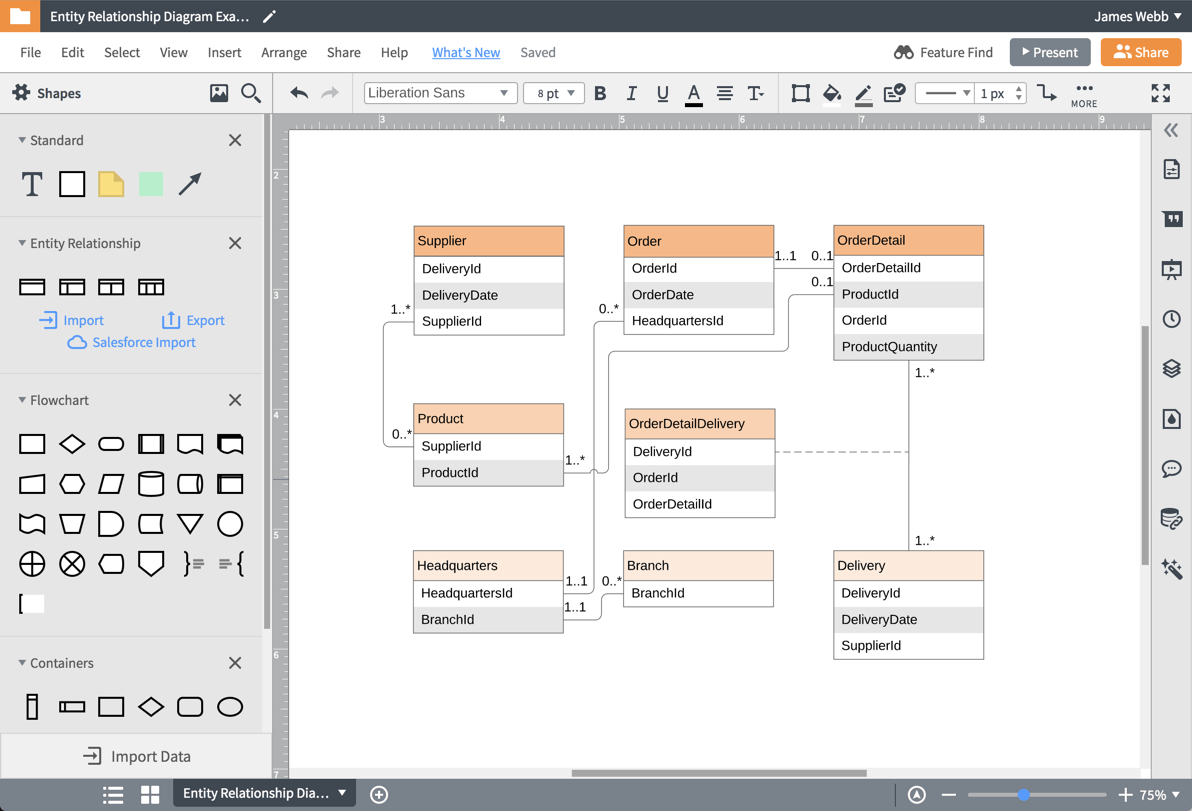

A strong entity can be defined solely by its own attributes, while a weak entity cannot. A related term is instance, in which the specific person or car would be an instance of the entity set.Įntity categories: Entities are categorized as strong, weak or associative. Other examples: Customers who purchased last month, cars currently registered in Florida. Other examples: customers, cars or products.Įntity set: Same as an entity type, but defined at a particular point in time, such as students enrolled in a class on the first day.

Database troubleshooting: ER diagrams are used to analyze existing databases to find and resolve problems in logic or deployment.A relational database has an equivalent relational table and can potentially be expressed that way as needed. It’s also later used to model a particular database or databases.
#LUCIDCHART ERD SOFTWARE#
Database design: ER diagrams are used to model and design relational databases, in terms of logic and business rules (in a logical data model) and in terms of the specific technology to be implemented (in a physical data model.) In software engineering, an ER diagram is often an initial step in determining requirements for an information systems project.The work of Chen, Bachman, Brown, Martin and others also contributed to the development of Unified Modeling Language (UML), widely used in software design. Brown published works on real-world systems modeling. Bachman developed a type of Data Structure Diagram, named after him as the Bachman Diagram. Brown were working with close predecessors of Chen’s approach.


It’s seen more recently in the 19th and 20th Century works of philosopher-logicians like Charles Sanders Peirce and Gottlob Frege.īy the 1960s and 1970s, Charles Bachman (above) and A.P.G. In a broader sense, the depiction of the interconnectedness of things dates back to least ancient Greece, with the works of Aristotle, Socrates and Plato. While serving as an assistant professor at MIT’s Sloan School of Management, he published a seminal paper in 1976 titled “The Entity-Relationship Model: Toward a Unified View of Data.” Peter Pin-Shan Chen), currently a faculty member at Carnegie-Mellon University in Pittsburgh, is credited with developing ER modeling for database design in the 1970s. Go to LucidChart an open the document containing the ERD you completed in the last article.Peter Chen (a.k.a. This article is a short one since you already completed most of the hard work by creating a normalized database design. In this article, you will generate the SQL commands for implementing your database in PostgreSQL, directly from LucidChart. We also implemented those design changes in our entity-relationship diagram in LucidChart. In the last article, we applied normalization techniques to our database to obtain a design meeting the third normal form (3NF). Deploying PostgreSQL for development and testing.Database Design: Entity-Relationship Diagram to Structured Query Language ( this article).Database Design: Entity-Relationship Diagrams.Database Design: Entities, Attributes, and Relationships.
#LUCIDCHART ERD SERIES#
This post is the fifth on a series exploring the subject of relational databases for the full-stack developer.įor quick access, here is the list of the articles on the topic: In this article, you use LucidChart to generate the Structured Query Language (SQL) commands for your database.


 0 kommentar(er)
0 kommentar(er)
